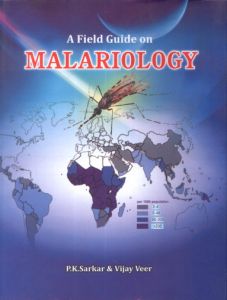
Contents: Preface. Acknowledgements. Introduction. I. Characteristics of Malaria Vectors: 1. Morphology of Anopheles mosquito. 2. Life history of Anopheles mosquito. 3. Internal anatomy of Anopheles mosquito. 4. Diagnosis of malaria vectors of India. 5. Distribution of Malaria vectors in India. 6. Bionomics of Indian anopheles mosquito. II. Identification and species composition of malaria vectors. 7. Terminology and taxonomic characteristics of Anopheles mosquito. 8. Pictorid key for identification of Indian female Anophline species. 9. Anopheline survey report of North-East India. 10. Recorded distribution of malaria vectors in North-East India and other parts of India. III. Methods and techniques: 1. Malaria Vectors. 11. Vectro survey, collection, pinning and preservation. 12. Determination of age of female Anopheles mosquito. 13. Determination of inseminated female anopheles mosquito. 14. Determination of sporozoites infection in salivary glands. 15. Determination of oocyst in midgut (stomach). 16. Identification of mosquito blood meal. 17. Determination of insecticidal resistance. 18. Preparation of stains and fixatives. 19. Some common mathematical models for vectors. 2. Malaria Parasites: 20. Malaria survey. 21. Spleen examination for classification of malaria enemicity. 22. Detection of malaria parasites in human host. 23. Diagnostic characteristics of malaria parasites. 24. Determination of drug resistance in parasites. 25. Some common mathematical models and indices on epidemiology of malaria. IV. Epidemiology of Malaria: 26. Life cycle of malaria parasites. 27. Epidemiology of malaria and its characteristics in India. 28. Clinical course and features of malaria in general. 29. Global status of malaria. 30. Epidemiological survey reports from Northeastern region, India. 31. Drug resistance to P. Falciparum in Northeastern region, India. V. Management of Malaria: 1. Malaria vectors (Larval). 32. Physical control of vectors. 33. Biological control of vectors. 34. Insecticidal control of vectors. 35. Integrated control of vectors. 2. Malaria Vectors (Adult). 36. Personal protection. 37. Insecticidal spraying. 38. Genetical control. 39. Zooprophylaxis. 3. Antimalarial drugs. 40. Traditional malaria drugs of Northeastern India. 41. Commercial drugs for malaria. 42. Present treatment schedule of malaria cases. 43. Side effects of some conventional antimalarial drugs. 44. Safety precautions for insecticide spray. 45. Symptoms and emergency medical treatment for insecticide poisoning. References.
A Field Guide on Malariology in a unique book on malaria control comprising both conventional and modern methods of mosquito and malaria control. Malaria an anopheline mosquito borne communicable disease is one of the major threats to mankind, causing huge physical, psychological and monetary loss and affecting about half of the world population. In India malaria and mosquito situation is grim and affects about 2-3 million people with more than a thousand deaths annually.
This book brings updated information on both malaria vector and parasite, and is organized in six chapters namely on diagnosis, distribution, biology, ecology and management; in addition, it also contains vital information on antimalarial plants found in various parts of the country used for treatment of malaria, which may be useful treasure for the development of newer effective antimalarial drugs.
The book should create interest among large section of the society and will be a great help to the public health managers of various levels engaged in combating malaria. The book is presented in lucid and clearly comprehensible style on malaria and its vectors and will hopefully serve good purpose to all public health workers, medical students, disease managers, researchers/scientists, academia and NGOs. And above all it will serve as an important source for malaria education to a common man who is going to play a key role in bringing down the malaria epidemic in future by community participation. (Jacket)